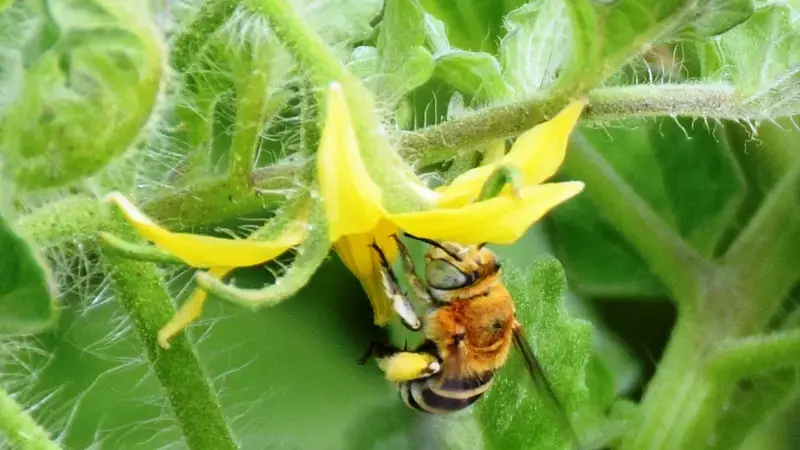A new publication in Nature Reports on how Farming with Alternative Pollinators improves smallholder farmers' incomes significantly

An open-access paper in Nature reports on the significant advantages of using the low-cost Farming with Alternative Pollinators (FAP) method to attract pollinators when compared to the reward-based Wildflower Strips (WFS) method used in many high-income countries.
Low- and middle-income countries cannot afford to pay for reward-based schemes that allow farmers to allocate pollinator-friendly wildflower strips alongside crops (land-sparing). The new study lead-authored by Dr. Stefanie Christmann, the original architect of FAP, assessed if the Farming with Alternative Pollinators approach can provide an incentive for farmers to protect pollinators without external rewards -and instead through higher income and reduced pest abundance. The first large-scale Farming-with-Alternative-Pollinators project in Morocco, used seven main field crops such as faba bean, zucchini, and eggplant, in over 200 farmer fields of four agroecosystems (adequate rainfall, semi-arid, mountainous, and oasis).
The study results showed that higher diversity and abundance of wild pollinators and lower pest abundance existed in enhanced fields than in monocultural control fields and the average net-income increase-per-surface in enhanced fields is 121%. Additionally, the high (65%) reduction of pest abundance allows most farmers to refrain from pesticide use – which also supports the protection of insects and humans’ health.
The significantly higher income, along with a substantial increase in food production, is a clear performance-related incentive for farmers to enhance habitats and help reverse pollinator decline. As well as the immediate gains to farmer livelihoods and nutrition, FAP, with its higher productivity per surface offers an economically sound approach to reducing pressure on (semi)-natural landscapes which are increasingly used for agricultural expansion. Such land-use change also endangers biodiversity and pollinators, something FAP is reversing. In summary, the study demonstrates that this new pollinator-protection approach offers strong potential for transformative change in agriculture.
The article is published in Nature and authored by Stefanie Christmann (ICARDA), Youssef Bencharki (ICARDA), Soukaina Anougmar, Pierre Rasmont, Moulay Chrif Smaili, Athanasios Tsivelikas (ICARDA), and Aden Aw-Hassan.
